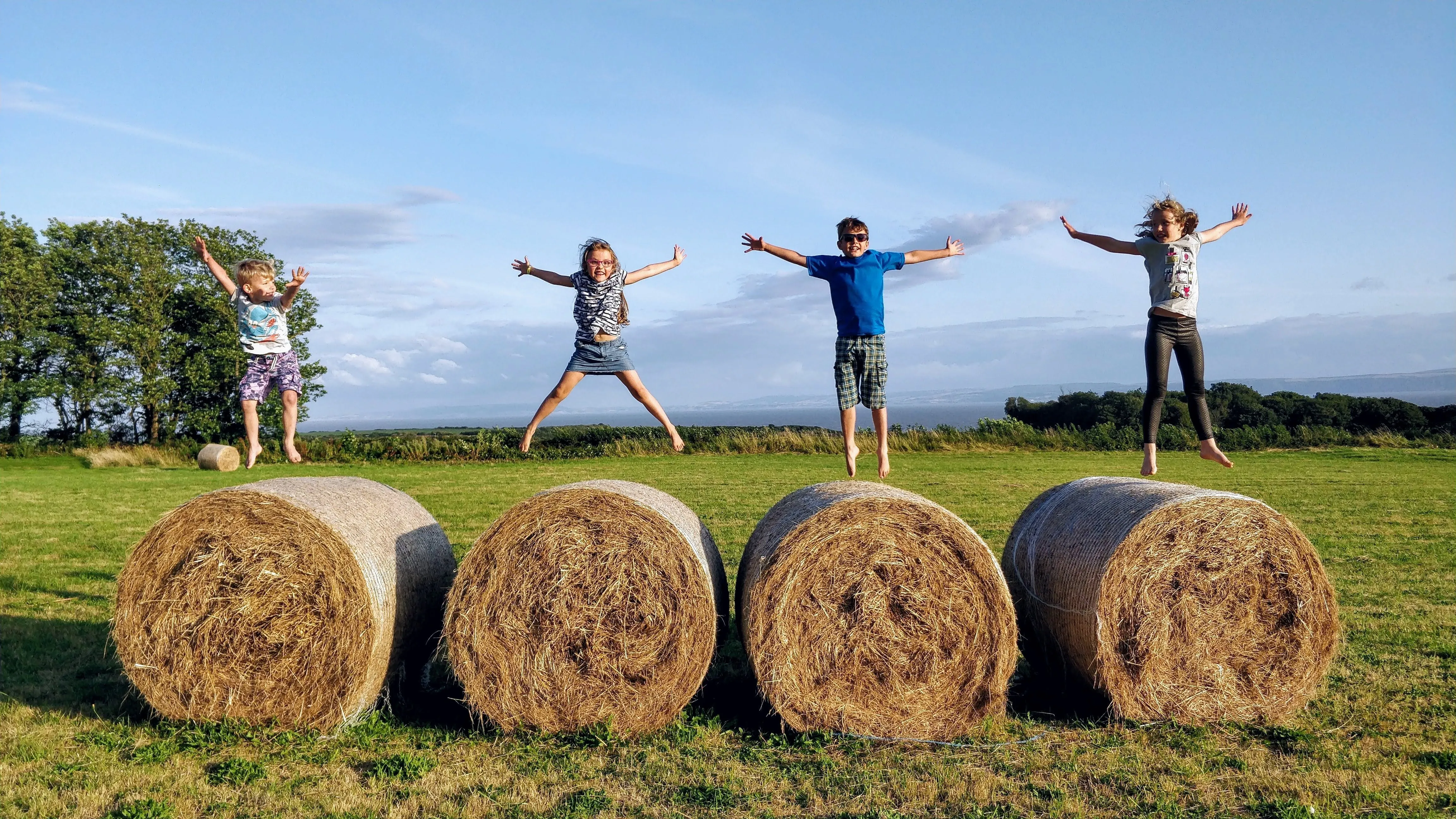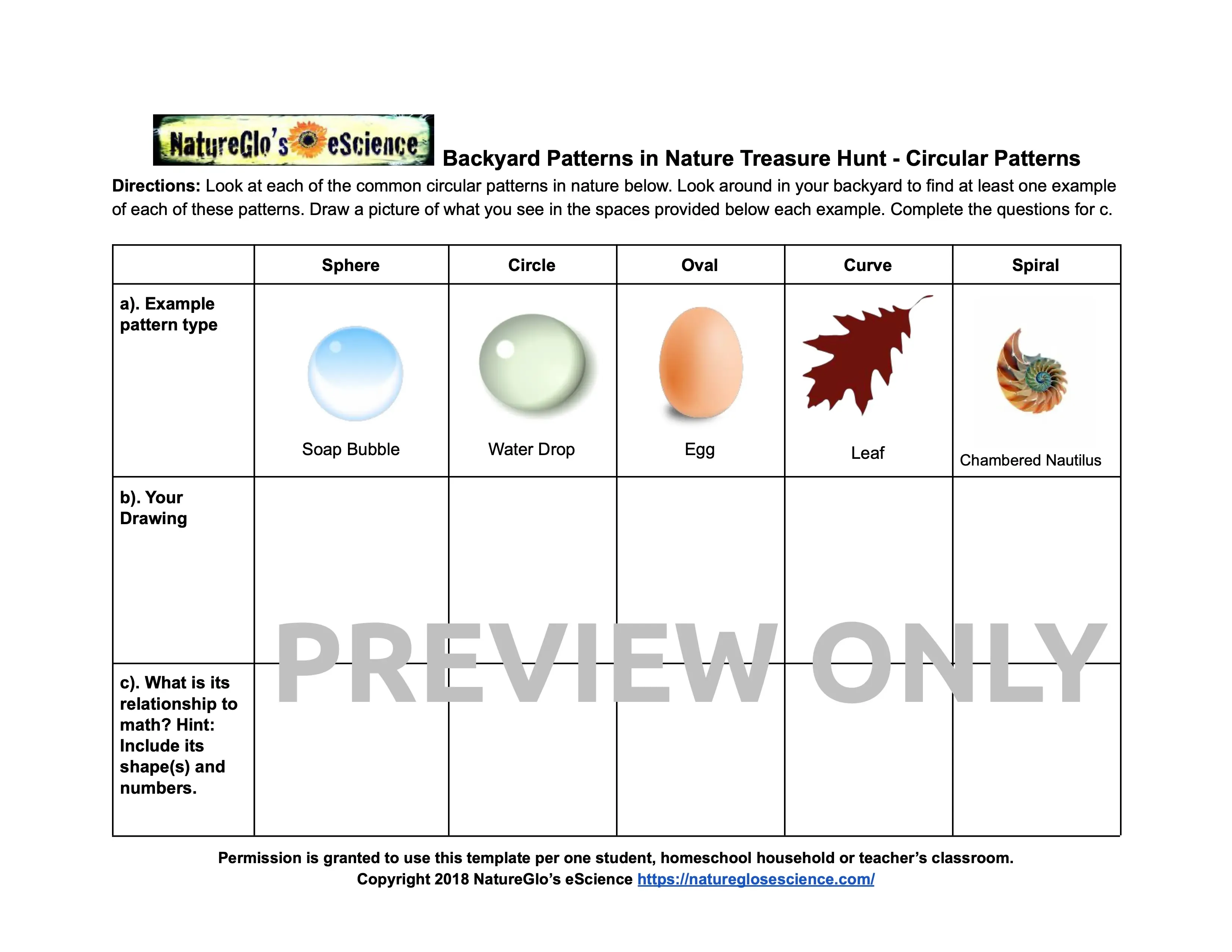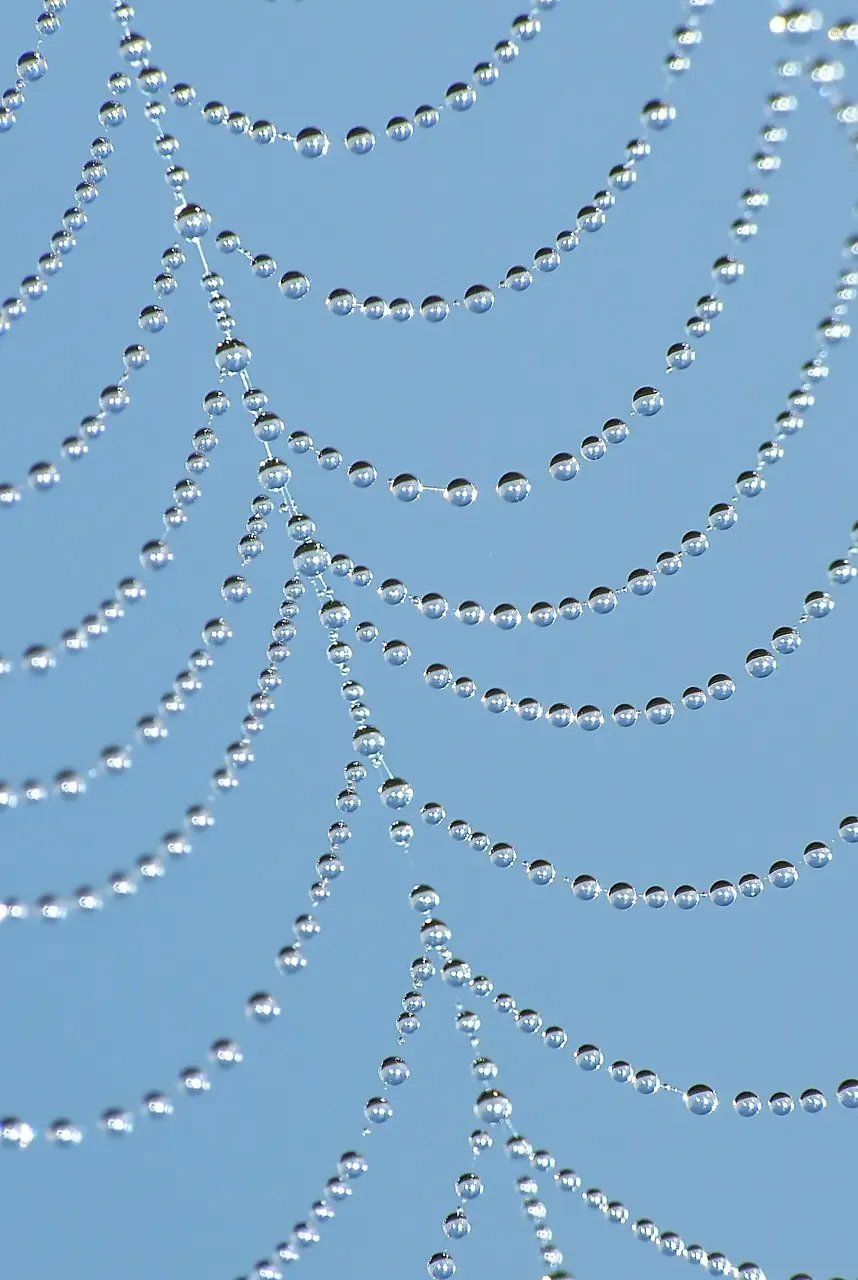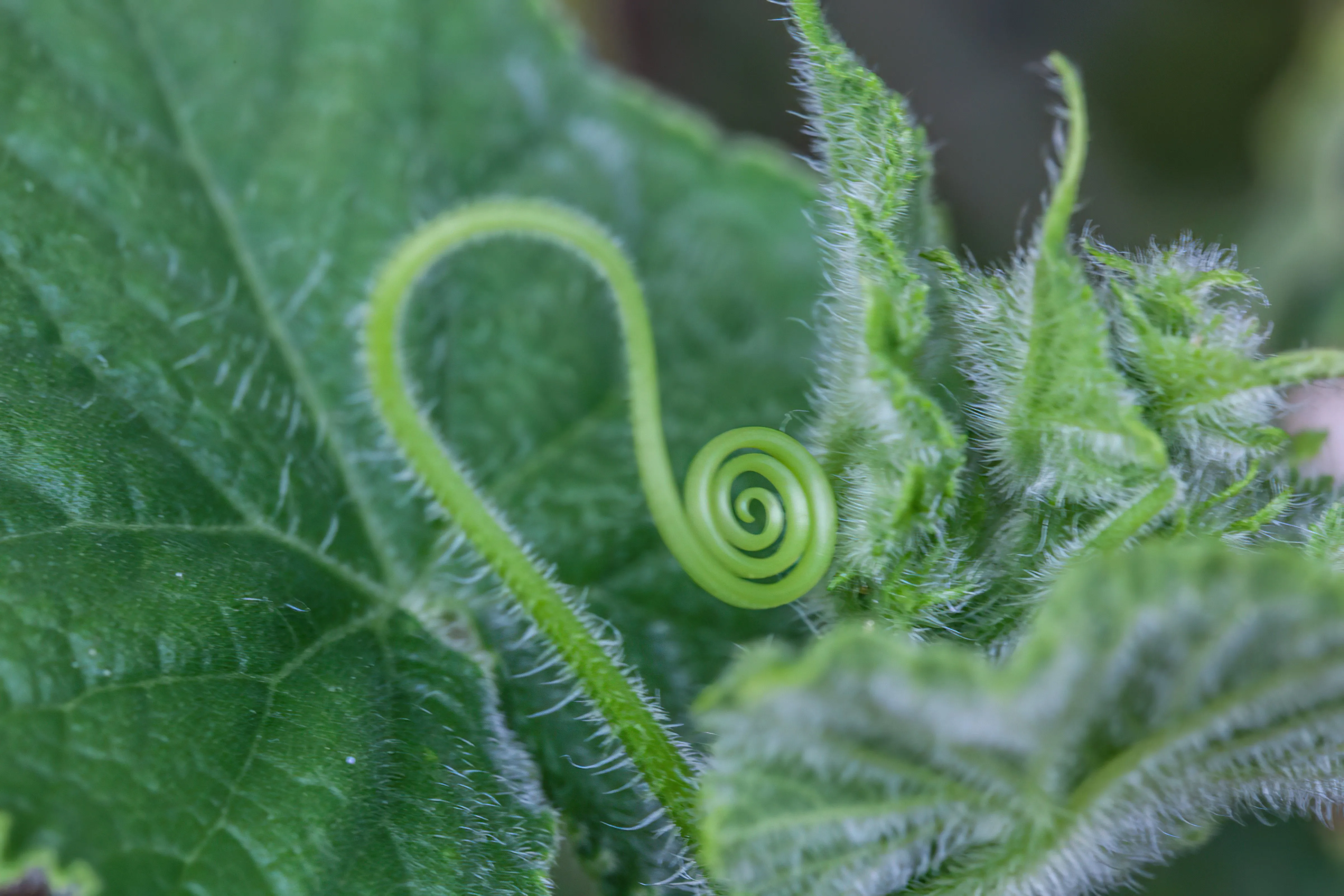How to Do Outdoor Maths Using the Free Patterns in Nature Activities Math Printables
Outdoor Maths Spark Endless Natural Mathematical Experiences for Children
Homeschooling outdoor maths, or "wild math", using NatureGlo's Patterns in Nature Scavenger Hunt templates, can supplement or eliminate the typical stress headaches associated with teaching traditional math. These three easy to use math template printables make math learning fun through a game that most children love, a scavenger hunt! It’s fantastic for ages 5 and up.
Even the reluctant teens, including high schoolers, get into hunting around their backyard looking for nature's beautiful patterns!
Enhance Gameschooling Math
If you're a gameschooler, these templates can easily be added to your gameschool math list.
Getting outdoors, starting right in your backyard or schoolyard, can yield so many math and nature connecting experiences. When children are outdoors during free play, they naturally gravitate towards making mathematical connections through their play and exploration. Children naturally love to make up games which so many times include math in them.
Observe children during outdoor free play without disturbing them and you'll see how they naturally gravitate towards finding and using math in their play.
What is child free play?
Child free play is play is directed by the children and not the adults.
It's best for homeschool and school educators to first use the templates themselves to get a hands-on feel for how to look for patterns in nature, especially if you've never done so before.

Who are the Outdoor Math Scavenger Hunt Templates for?
Outdoor math scavenger hunt templates aren't only for wildschooling. Outdoor maths, or nature math can also be used to supplement any homeschool math style. Wherever you are in your home or school educator teaching journey, this post can help you with the best homeschool math curriculum learning method, which is, exploring math in the real world.
Whether you're a "school-at-home", classical homeschooler, or, on the other end of the spectrum, a radical unschooler, NatureGlo's FREE Patterns in Nature Backyard Scavenger Hunt templates can help you and your kiddos learn to see and connect with real life math found everywhere.
What are NatureGlo's Patterns in Nature Scavenger Hunt Math Printables?
NatureGlo's Patterns in Nature Scavenger Hunt templates are composed of three fillable color math printables. They are fantastic for children and adults ages 5 and up. Younger learners can join in the learning fun with older siblings.
Go ahead now and get a free copy of the templates below. Sign up directly from this article below, or, GO HERE to the template download page and sign up there. You'll receive the template download shortly after signing up.
Here's how to get NatureGlo's FREE Patterns in Nature Scavenger Hunt Templates:
- Add your first name and email into the given fields.
- Check your inbox or Spam box (you might need to wait up to 15 minutes to receive the email depending on server times)
- Confirm your subscription
- You'll immediately receive your freebie after confirming your subscription!
Why Use NatureGlo's Patterns in Nature Scavenger Hunt Templates in Homeschool Math?
Firstly, these patterns in nature scavenger hunt templates will help inspire children to learn to see nature's most common patterns. It's a treasure hunt, a game, for children. Play is the language of childhood learning. What better way for children to play with math than through learning to search for, find and see math connections in nature's beautiful patterns.
Nature's patterns have inspired humans since ancient times to create tools, art, clothing, and beautiful strong architecture, including homes that many live in today. There's a special type of architecture inspired by nature called, biophilic design that connects people in their homes with nature guided by 7 principles.
What Homeschool Math is Covered in the Patterns in Nature Scavenger Hunt Templates?
In NatureGlo's Patterns in Nature Scavenger Hunt templates, the most common 5 patterns in nature are covered. Each of these patterns can be used as a springboard for introducing or inspiring a traditional geometry curriculum if you're using one. These templates are also great for wildschoolers and unschoolers who don't necessarily address traditional geometry in middle and high school unless the child requests it.
Let's have a look inside!
Below, you can see the first template introducing the most common 5 patterns in nature.
The following geometric concepts are covered in the first patterns in nature template above:
- Sphere
- Circle
- Oval
- Curve
- Spiral
These figures are typically introduced to young children as early as pre-school and reinforced with increasing mathematical complexity all the way into middle school, high school and college geometry.
Introducing or re-introducing these patterns and shapes to children is appropriate at any age, especially before school as it can set up learners for a more pleasant math learning experience. What better way to introduce very young children to math then through it's beauty and wonder found right outside in your yard!
Looking for Spheres in Nature
The very first common pattern in nature found in the template is the sphere. Think about where you have seen spheres in nature. You can look in your yard now to see if you can find some spheres. We know that the most basic definition for a sphere is "a round shaped 3-dimensional solid figure." Once you learn to see such patterns in nature, they'll pop out like found treasure all around.
My favorite spheres found in nature are from early morning dew drops!
Aren't the dew drops found on the spider's we so beautiful? Isn't it incredible that they are perfect spheres far more interesting to look at then what's found in a typical geometry textbook?
Dew drops can be found perfectly on spider's webs and all over plant life like lawn grass, leaves and flowers. If you're not a morning person able to observe early morning dew, try looking for spheres on plant life during and after a rain.
Below you can see my simple drawing mimicking what I see in nature. Obviously, you and your children's own images will be according to your drawing experience and what you're eye perceives.
There's no right or wrong way of doing the drawings, just exploring, sketching, and helping to solidify in the mind's eye what one is perceiving. The most important aspect of this treasure hunt is for you and the children to have FUN with the real world math connections.
Zoom in closely in the image below (beneath the soap bubble sphere) to see the tiny dewdrops I drew of the dewdrop filled spider's web image above.
This an example of how you and your learners can make sketches into the templates.
What are the math printable takeaways?
The most important takeaways from the Patterns in Nature Scavenger Hunt Templates are:
- Playing with math through the game of a scavenger hunt.
- Noticing the beauty of math all around.
- Learning to connect with math found abundantly in the real world.
You have some choices for how to use these templates. You could start off with either one below according to your comfort level and homeschool style.
#1. How to make use of the templates as an Educator-directed Tool
- Bring the children outdoors into your yard or school yard.
- Pass out to them, the first template (the 5 patterns in nature) attached to a book or clipboard with a pencil. The book or clipboard gives the learners a much needed solid surface to write on.
- Explain to the children that they're going on a treasure hunt looking for the patterns found on the template.
- OPTIONAL: Make colored pencils or markers available to the learners from a central location, or, each learner could have their own poach with their chosen coloring utensils inside to port around with them.
- Invite them to read along as you read the directions out loud.
- Prep ahead of time the first pattern (or any of the other patterns) by noting its location for sketching. Briefly demonstrate how to look for the pre-chosen sphere in nature. Model drawing it on your copy of the template. Show your drawing to the children.
- Have the children try finding an example of a sphere in nature on their own. Sometimes every pattern in the template might not be found in your backyard or schoolyard. Children can supplement this by going online and finding pictures from nature exhibiting the pattern. Keywords possible for searching would be "spheres in nature", "circles in nature", etc.
#2. How to Make use of the Templates as a Free Play Tool for Unschool or Wildschool Children
Unfortunately, in the 21st century (I hope this will change) free outdoor play is frowned upon in our society in favor of adult driven activities. Why? There's a lot of fear mongering from news hype around allowing children to have free unsupervised play outside.
However, free play is the language of childhood learning. Check out anthropologist, Dr. Peter Gray for more scientific research based articles about the importance of childhood free play.
Options for using NatureGlo's Patterns in Nature templates as a child free play tool.
- Give the templates to the children to figure out how to use on their own. If they have questions, they'll ask. If not, allow them to use them as they wish. You can standby to observe, but, don't interfere with how the children choose to use the templates, even if they're not using them according to the given instructions. This is especially great for older learners who are good at self-direction.
- Or, Model how to use the templates outdoors with the children. Read aloud the directions. Invite the children to watch you as you find the first pattern in nature, draw it, and write a short description about it. Answer any questions that they may have about the activity. Ask them if they would like to try the activity on their own. If they say yes, hand a copy of the templates to them to explore and use on their own as they wish. Let them know that they can ask for help if they get stuck.
The templates can also inspire questions which lead to open discussion about the wonder and beauty of math found in nature. Enjoy the open conversations that can naturally emerge from this activity.
How to Use the Patterns in Nature Math Printables Through the Seasons
NatureGlo's Patterns in Nature Scavenger Hunt math printables can be used during any season. In fact, they can be a great activity that your and your family or classroom return to during each season. It can be fascinating to revisit the same plants, animals and minerals throughout the year, notice any changes and re-draw them into a new copy of the templates for the new season.
Alternatively, you can go to local parks or preserves to find other and new patterns in nature scavenger hunting opportunities. Changing locations for this activity can add a great deal of excitement and interest. The children can compare each season and locations new template drawings with other seasons.
Spring Backyard Patterns in Nature
Spring, the time of rebirth, is a spectacular time for observing and sketching spring ephemeral (short lived) wildflowers. One of my personal favorites, if you live in an area where ferns grow, is to catch the early spring fern fiddleheads, sketch and even photograph them. Fern fiddleheads exhibit beautiful growth spirals.
Spring is an exciting season for children to explore patterns in nature. Other patterns and numbers found in nature great to explore in spring include:
- Wildflowers such as Trout lily - triangular, veined, plant parts in 3's, also a Fibonacci number, 3.
- New leaf growth - spring is a fantastic time of the year to see new leaf growth and observe the beauty and wonder of the fractal growth in leaves when they're just beginning to grow.
Summer Backyard Patterns in Nature
Summer time is a fantastic time to see plants in all of their mature glory. Leaves are fully unfurled and display lovely fractal patterns and spiral growth around plant stems. Flowers are in full bloom and exhibit a myriad of colors, shapes and patterns that can thrill any learner.
Fall Backyard Patterns in Nature
Fall time can be a super fun time to look for backyard patterns in nature. It's a magical time of year where one of the most prevalent events are leaves falling, flowers dying and leaving behind beautiful fractal patterns. Check out the leaf skeleton below showing it's beautiful fractal patterns.
Common and Easy to Find Fall Patterns in Nature
- Fractals, or the veined self-similar pattern found in leaves, branches and trees
- Squashed spherical pumpkins and other unique shapes found in the gourd family
- Fungi circular caps
Winter Backyard Patterns in Nature
Winter time can be a magical time to get the kids outdoors looking for patterns in nature. Don't let the cold weather coop you up indoors. Pick a sunny day, bundle up, grab a new copy of NatureGlo's Patterns in Nature Templates and have fun looking at winter wonderland patterns in nature everywhere around you.
My personal favorite winter patterns in nature are the hexagonal snow crystal.
Common and Easy to Find Winter Patterns Found in Nature
- Hexagonal snow crystals
- Curves found in snow landscapes
- Icicles exhibiting lines and curves
Conclusion
Looking at backyard patterns in nature is a great way to make homeschool or school math fun for any age. Go ahead and try this activity yourself first using NatureGlo's FREE Patterns in Nature Scavenger Hunt templates. My learners have been using these templates for many years and gotten a ton of mileage out of this fun and easy to do nature connecting activity. Try this activity over and over per season and return to it each year to build on observations, lessons and artwork created in previous years.
Go ahead now and get a free copy of the templates below. Sign up directly from this article below, or, GO HERE to the template download page and sign up there. You'll receive the template download shortly after signing up.
Here's how to get NatureGlo's FREE Patterns in Nature Scavenger Hunt Templates:
- Add your first name and email into the given fields.
- Check your inbox or Spam box (you might need to wait up to 15 minutes to receive the email depending on server times)
- Confirm your subscription
- You'll immediately receive your freebie after confirming your subscription!
Remember, the most important aspect of the Patterns in Nature Scavenger Hunt activity is to have fun and really enjoy the learning journey as you explore the beauty and wonder of mathematics found everywhere around us.
Talk Soon,
NatureGlo










